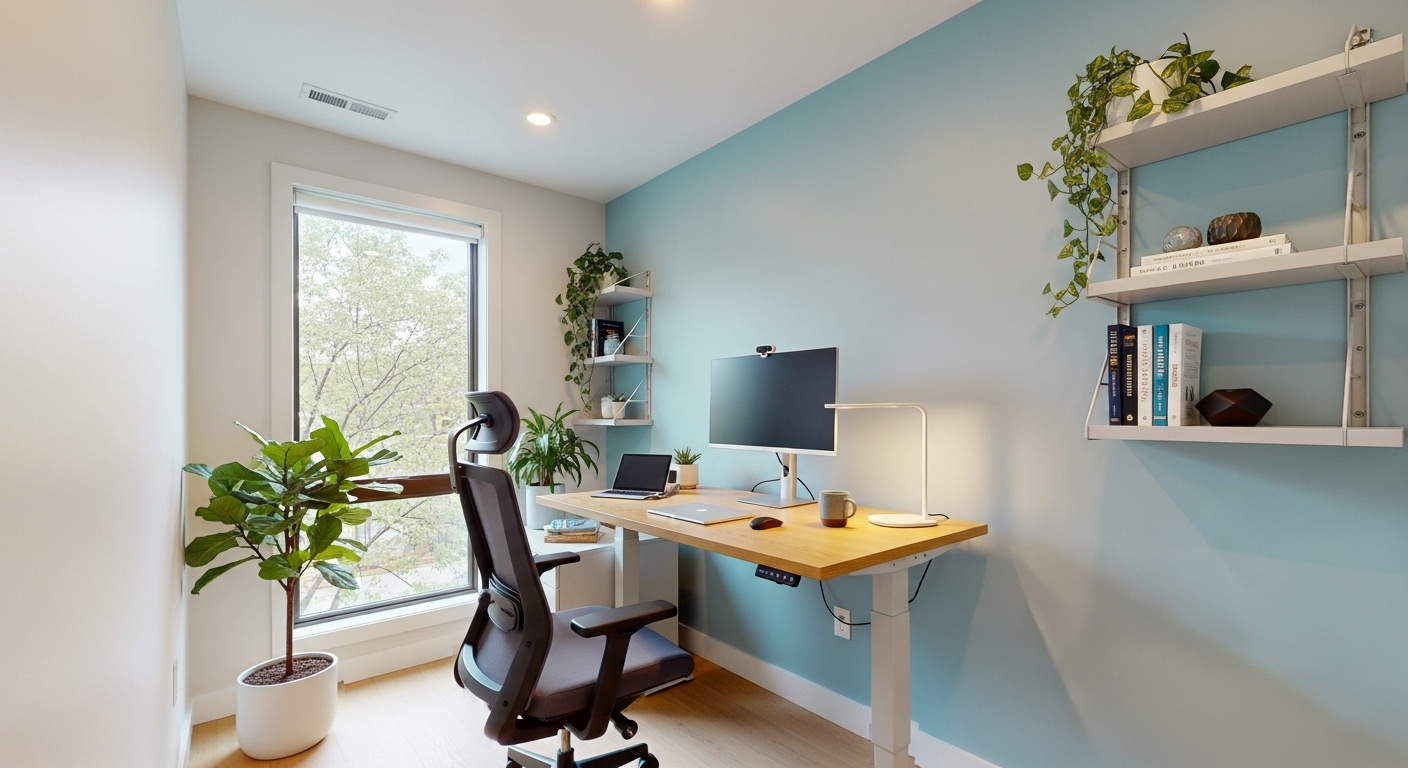The great remote work experiment has ended, and the verdict is in: for millions, it’s no longer an experiment but an established reality. We’ve moved beyond makeshift kitchen table offices and the novelty of video call backgrounds. Now, the modern professional faces a new, more profound challenge—not just how to work from home, but how to thrive in a world where the boundaries between career and life have fundamentally blurred. This is the dawn of the Remote Renaissance, an unprecedented opportunity to consciously design a more integrated, fulfilling, and sustainable professional existence. It’s a shift from simply replicating the office at home to building a new operating system for our lives. This guide will navigate the core pillars of this new era: from architecting an environment that fosters focus to mastering the art of virtual connection and proactively charting a course for career growth in a decentralized world. It’s time to stop balancing and start integrating.
Designing Your Sanctuary: Beyond the Impromptu Workspace
The first step in the Remote Renaissance is acknowledging that your environment is a critical tool for success. The ad-hoc setups of 2020 are no longer sufficient for long-term productivity and well-being. Crafting a dedicated workspace is less about aesthetics and more about psychological signaling. When you enter this space, your brain should understand it’s time to focus. This doesn’t require a separate room; it can be a specific corner of an apartment, but the key is dedication. Invest in ergonomics—a supportive chair, a monitor at eye level, and an external keyboard are non-negotiable for physical health. Beyond the physical, consider the sensory inputs. Natural light is proven to boost mood and regulate circadian rhythms, so position your desk near a window if possible. Introduce elements that bring you calm, like a plant or a piece of art. Equally important is the concept of a ‘digital sanctuary.’ This involves curating your digital environment with the same intentionality. Use separate browser profiles for work and personal life, turn off non-essential notifications, and organize your digital files to reduce cognitive load. The goal is to create a low-friction environment where deep work can happen naturally, and when you step away, you can truly disconnect, leaving the pressures of the workday behind in that clearly defined space.
The Asynchronous Advantage: Mastering Communication in a Distributed World
One of the most significant shifts in the Remote Renaissance is the move from synchronous (‘live’) to asynchronous communication. The tyranny of the green ‘available’ dot and the expectation of instant replies are relics of an office-centric mindset that lead directly to burnout. Mastering asynchronous work is the key to unlocking the true flexibility and deep focus that remote life promises. This means prioritizing clear, thoughtful, and well-documented communication over constant, real-time chatter. Tools like Slack, Microsoft Teams, and email are still vital, but their use must evolve. Instead of a quick, ambiguous question, write a detailed message that provides all necessary context, links to relevant documents, and clarifies the desired outcome and deadline. This respects your colleagues’ focus time and often leads to a better, more considered response. Video messaging tools like Loom are invaluable for explaining complex ideas without needing to schedule a meeting. The ultimate goal is to create a single source of truth—a project management system like Asana or a shared document hub—where anyone on the team can find the status of a project without having to interrupt someone. As author Cal Newport notes, this shift requires a new work culture.
“In the 21st century, the constant, unstructured electronic communication is a drain on the energy and attention of knowledge workers.”
By embracing an asynchronous-first approach, teams can reduce meeting fatigue, accommodate different time zones and work schedules, and empower individuals to structure their days for maximum impact.
Combating the Isolation Echo: Building Your Virtual Community
The most cited drawback of remote work is often the profound sense of isolation. The spontaneous conversations, shared lunches, and subtle camaraderie of an office are difficult to replicate online. However, in the Remote Renaissance, building community isn’t an accident; it’s an intentional act. It requires moving beyond task-oriented communication and creating deliberate spaces for human connection. A simple but powerful strategy is the ‘virtual water cooler’—a dedicated channel in your team’s communication platform for non-work chat, sharing hobbies, pet photos, or weekend plans. Another effective technique is scheduling regular, informal video calls with no agenda, often called ‘virtual coffee chats.’ These 15-minute conversations can be with direct teammates or colleagues from other departments, helping to rebuild the weak social ties that are crucial for collaboration and a sense of belonging. Don’t underestimate the power of shared interests. Starting a virtual book club, a fitness challenge, or a gaming group can foster bonds that transcend project deadlines. For leaders, it’s critical to model this behavior and create psychological safety, encouraging team members to be their whole selves. While virtual connections are powerful, they can be supplemented by a strategic approach to in-person interaction. Even if the entire company is remote, organizing quarterly or biannual team meetups can supercharge relationships and build a foundation of trust that sustains the team through months of virtual collaboration.
Navigating the Invisible Ladder: Proactive Career Growth from Afar
In a traditional office, career progression is often visible. You see who is leading meetings, who gets face-time with senior leadership, and who is praised in public forums. Remotely, this ‘career ladder’ can feel invisible, leading to anxiety about being overlooked. Thriving in the Remote Renaissance demands a proactive, almost entrepreneurial, approach to your own career development. Your work must speak for itself. This means focusing on impact over activity. Instead of talking about how busy you are, document your accomplishments with clear metrics and outcomes. Regularly provide your manager with concise summaries of your progress and results. Visibility is key, but it looks different in a remote setting. Actively participate in virtual meetings, offer solutions in public channels, and volunteer for challenging projects that align with your career goals. Seek out a mentor, even if they are in a different time zone or company. A strong online professional presence, such as a well-maintained LinkedIn profile or contributions to industry blogs, also helps build your personal brand beyond the confines of your immediate team. It’s also crucial to be explicit about your ambitions. Schedule regular career conversations with your manager to discuss your goals, ask for specific feedback on what skills you need to develop, and create a clear plan for your next steps. Don’t wait for opportunities to find you; you must actively build the case for your own advancement.
The Art of the Digital Shutdown: Reclaiming Your Personal Boundaries
When your home is your office, the workday can easily bleed into every corner of your life. The lack of a physical commute removes a natural transition period, making it difficult to mentally switch off. The Remote Renaissance is not about working more; it’s about working smarter and living fuller. This requires mastering the art of the ‘digital shutdown’—a clear, consistent ritual that signals the end of your professional day. This could be as simple as closing your laptop and putting it out of sight, changing your clothes, or going for a walk. The specific action is less important than its consistency. Crucially, this ritual must be paired with strict technological boundaries. Turn off work-related notifications on your phone after your designated hours. If possible, avoid having work email or messaging apps on your personal devices altogether. The temptation to ‘just quickly check’ can easily unravel your downtime and keep your brain in a state of low-grade work anxiety. This discipline is not just about preventing burnout; it’s about creating the space necessary for deep rest, hobbies, and meaningful relationships, which in turn fuel your creativity and energy during work hours. The goal is to establish a rhythm where periods of intense, focused work are balanced by periods of genuine, uninterrupted personal time. This boundary-setting is perhaps the most critical skill for long-term sustainability and happiness in a remote career.
Beyond Productivity Metrics: Redefining Success in a Remote-First World
For decades, professional success was intertwined with physical presence—the first one in, the last one out. Remote work shatters this paradigm, forcing a necessary re-evaluation of what success truly means. In the Remote Renaissance, success is not measured by hours logged or emails sent, but by impact, autonomy, and well-being. It’s a shift from valuing activity to valuing outcomes. This requires a high-trust environment where managers empower their teams with clear goals and the freedom to achieve them in the way that works best for them. This focus on results, rather than process, is the foundation of a healthy remote culture. On a personal level, this is an invitation to define your own success metrics. Does success mean having the flexibility to pick up your kids from school every day? Does it mean having the time and energy to pursue a passion project? Or does it mean delivering high-impact work in four focused days instead of five frantic ones? The autonomy of remote work allows you to architect a life that aligns with your personal values, not just your company’s expectations. This redefinition also encompasses mental and physical health as core components of professional success. A burnt-out, exhausted employee is not a successful one, no matter their output. True success in the remote era is sustainable. It’s a holistic measure of a fulfilling career integrated into a well-lived life.
Conclusion
The transition to widespread remote work is more than a logistical shift; it is a cultural and personal revolution. The Remote Renaissance offers a canvas on which the modern professional can paint a new picture of success, one defined by intentionality rather than inertia. We’ve explored the foundational elements of this new reality: creating a physical and digital sanctuary for focus, mastering asynchronous communication to reclaim our time, intentionally building a virtual community to combat isolation, and proactively managing our careers on an invisible ladder. Central to it all is the art of setting firm boundaries, allowing us to build a life where work fuels our passions rather than consumes them. This is not a passive change; it requires conscious effort and a new set of skills. By embracing these principles, we can move beyond simply adapting to remote work and begin to truly leverage its potential. We can build careers that are not only productive and impactful but also deeply integrated with a rich, fulfilling personal life. The office of the past is gone, and in its place is an opportunity to architect a future of our own design. The Remote Renaissance is here, and it’s yours to build.





